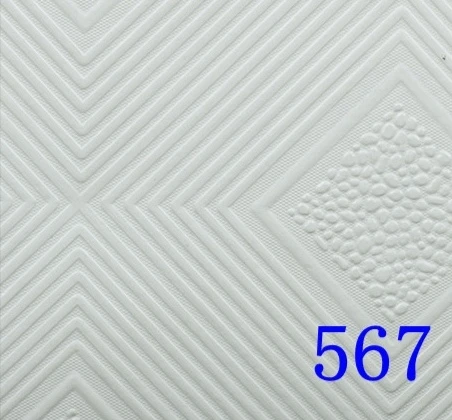- Afrikaans
- Albanian
- Amharic
- Arabic
- Armenian
- Azerbaijani
- Basque
- Belarusian
- Bengali
- Bosnian
- Bulgarian
- Catalan
- Cebuano
- Corsican
- Croatian
- Czech
- Danish
- Dutch
- English
- Esperanto
- Estonian
- French
- German
- Greek
- Hindi
- Indonesian
- irish
- Italian
- Japanese
- Korean
- Lao
- Malay
- Myanmar
- Norwegian
- Norwegian
- Polish
- Portuguese
- Romanian
- Russian
- Serbian
- Spanish
- Swedish
- Thai
- Turkish
- Ukrainian
- Uzbek
- Vietnamese
Ara . 26, 2024 10:45 Back to list
Understanding Ceiling Grids and Their Importance in Modern Interior Design
Understanding Ceiling Grids A Comprehensive Overview
Ceiling grids are an architectural and design element that plays a vital role in both residential and commercial buildings. They offer a myriad of functional benefits while also enhancing the aesthetic appeal of interiors. In this article, we will explore what ceiling grids are, their types, advantages, and applications, providing you with a comprehensive understanding of this essential component in modern construction.
At its core, a ceiling grid is a suspended framework that supports ceiling tiles or panels. Typically made from lightweight materials such as metal or PVC, the grid consists of perpendicular metal channels that form a grid-like pattern across the ceiling. The spaces created by this grid are where the ceiling tiles are installed, providing not only a finished look but also housing for various utilities such as wiring, HVAC components, and fire safety systems.
Types of Ceiling Grids
There are several types of ceiling grids, each designed to meet specific aesthetic and functional needs
1. Acoustic Ceiling Grids These grids are specifically designed to accommodate sound-absorbing tiles. They are commonly used in commercial settings like offices, schools, and auditoriums to enhance sound quality and reduce noise levels.
2. Metal Ceiling Grids Made from aluminum or steel, these grids offer durability and strength. Metal ceiling grids can support heavier tiles and are often chosen for industrial settings where sturdiness is a concern.
3. Vinyl Ceiling Grids These grids are lightweight and resistant to moisture, making them a suitable choice for bathrooms and kitchens. Vinyl ceiling grids can endure humidity without warping or deteriorating.
4. Integrated Ceiling Grids In modern architectural designs, integrated grids feature built-in lighting systems, enhancing both functionality and aesthetics. These grids streamline the installation process by combining several elements into one system.
Advantages of Ceiling Grids
what is ceiling grid

Ceiling grids provide numerous benefits, which contribute to their popularity in both residential and commercial construction
- Easy Installation One of the primary advantages of ceiling grids is their straightforward installation process. With a well-defined framework, tiles can be easily placed and replaced, facilitating quick adjustments.
- Accessibility The hollow spaces within ceiling grids allow easy access to plumbing, electrical, and HVAC systems. This accessibility simplifies maintenance and repairs, ensuring that these essential services can be quickly addressed without major disruption.
- Aesthetic Flexibility Ceiling grids come in various styles, colors, and materials, allowing for aesthetic customization. Whether you desire a contemporary look or a more traditional design, ceiling grids can accommodate your vision.
- Sound Dampening Acoustic ceiling grids, when used with the appropriate tiles, considerably reduce airborne sound transmission. This is especially valuable in environments requiring privacy and minimal noise disturbance.
- Concealing Structures Ceiling grids effectively hide wires, ducts, and other structural elements, creating a clean and polished appearance in any interior space.
Applications of Ceiling Grids
Ceiling grids are found in a wide range of settings. In commercial buildings like office spaces, schools, hospitals, and retail establishments, they contribute to both functionality and aesthetic appeal. In residential properties, ceiling grids enhance the ambiance, especially in basements and finished attics, where they can provide a modern touch.
In conclusion, ceiling grids are a fundamental aspect of modern construction, offering both practical solutions for utility management and aesthetic enhancements for interior spaces. Their versatility and ease of installation make them a popular choice in various applications, providing essential support for ceiling tiles and improving the overall environment of a space. Whether you're renovating your home or planning new constructions, incorporating ceiling grids might just be the design solution you need.
-
Mineral Fiber Ceiling Tiles Embossed Surface PatternNewsAug.05,2025
-
Mineral Fiber Board Xingyuan Vision for Better SpacesNewsAug.05,2025
-
Drop Down Ceiling Tile Office Use FitNewsAug.05,2025
-
PVC Gypsum Ceiling White Base ColorNewsAug.05,2025
-
Access Panel on Ceiling Xingyuan Integrity EthicNewsAug.05,2025
-
Ceiling Trap Doors Fire Resistant DesignNewsAug.05,2025







